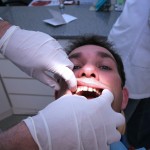
Most head and neck cancers are squamous cell carcinomas that develop in the mucosal lining of the upper aerodigestive tract. Oral cancers are the commonest of these and can potentially be detected by a simple visual examination of the mouth which can be performed by dentists, although detection of early lesions requires great skill and care.
The aim of this review was to assess any independent association between past dental visits/check-ups and the incidence cancers of head and neck/ upper aerodigestive tract (UADT) and oral cancer worldwide.
Methods
Searches were conducted in the PubMed, CHINHAL and Cochrane library databases. Case-control, prospective and retrospective cohort, cross-sectional, and screening studies that assessed an association between past dental visits/dental check-ups among the incident cases of head and neck cancer (HNC) and UADT cancers were considered. Studies providing sufficient information to calculate the association between cancer incidence and dental visits were included.
Two reviewers independently screed and selected studies and abstracted data. Methodological quality was assessed using the Effective Public Health Practice Project quality assessment tool for quantitative studies. A number of random effects meta-analyses were conducted.
Results
- 38 studies (32 case-controlled) were included.
- 14 were conducted in Europe, 9 in North America, 5 South America, 9 Asia and 1 in Australia.
- 29 studies were considered to be of strong quality, 7 of moderate quality and 3 weak.
- The odds of never/irregular/not frequent dental visits as compared to yes/regular/frequent dental visits were greater among the cases as compared to controls.
| No of studies | Odds ratio (95%CI) | |
| All HNCs/UADTCs | 26 | 2.24 (1.89 – 2.65) |
| Oral Cancers | 13 | 1.93 (1.47 – 2.52) |
Conclusions
The authors concluded: –
This systematic review and meta-analysis indicates that individuals with never/irregular/not frequent dental visits are more likely to be incident cases of HNCs/UADT cancers.
Comments
While the authors have searched 3 major databases to identify papers they note that there is the possibility that some relevant studies were excluded. A majority of the included studies were assessed a being of strong quality however the majority were case-controlled so as the authors suggest recall and selection bias are potential issues to take into consideration.
Although the evidence-base to support a formal population-based screening programme for oral cancer is lacking (Dental Elf – 26th Nov 2013) opportunistic screening as part of routine full mouth examination during regular dental checks is recommended. It is well known that early diagnosis improves outcomes for oral cancer however as a recent data-linkage study from Scotland (Purkayastha et al 2018) demonstrated 53.7% of patients subsequently diagnosed with oral cancer had made no dental contact in the two years pre-diagnosis.
Oral health is an important component of general health so as well as highlighting the risks for HNCs/UADT cancers, regular full mouth examinations for those attending dental clinics and training along with improving access to dental services for disadvantaged groups would aid early detection.
Links
Primary Paper
Gupta B, Kumar N, Johnson NW. Evidence of past dental visits and incidence of head and neck cancers: a systematic review and meta-analysis. Syst Rev. 2019 Feb 4;8(1):43. doi: 10.1186/s13643-019-0949-0. Review. PubMed PMID: 30717784; PubMed Central PMCID: PMC6360721.
Other references
Dental Elf – 26th Nov 2013
Purkayastha M, McMahon AD, Gibson J, Conway DI. Is detecting oral cancer in general dental practices a realistic expectation? A population-based study using population linked data in Scotland. Br Dent J. 2018 Aug 10;225(3):241-246. doi:10.1038/sj.bdj.2018.544. PubMed PMID: 30095121.
